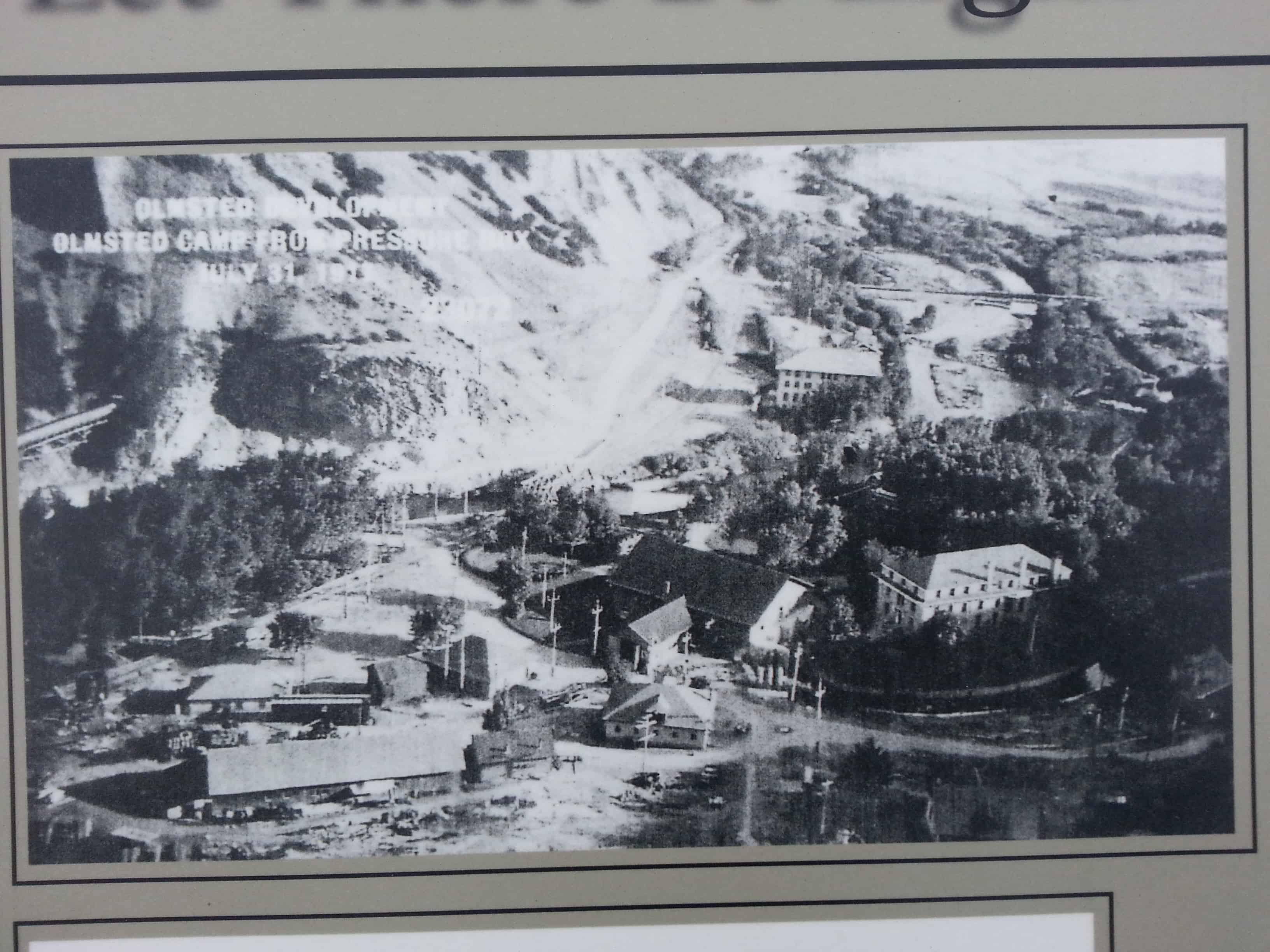Tags
Hydroelectric, NRHP, Orem, Power Plants, Provo, Provo Canyon, utah, utah county

Olmsted Power Plant (one of the first power plants in America)
(Near the mouth of Provo Canyon, 1018 North 1630 East in Orem, Utah)
In 1830 Michael Faraday of England discovered that when a coil of wire was moved near a magnet, the magnet induced a current of electricity in the wire. Faraday’s experiments resulted in the dynamo which generates electricity.
Anxious to capitalize on this exciting new power source, investors throughout the world began to develop and build these dynamo machines.
Installation of the electric lines began which would transform the world from a labor-intensive planet to one in which electrical energy could multiply the efforts of people by thousands of times.
One of the early leaders in that effort in the United States was the Telluride Power Company. They selected a site at 1600 East 800 North, alongside the Provo River, to build one of the first power plants in America. Their Olmsted Power Plant became operational in 1904, supplying surrounding areas up to fifty miles away with electric power.
One of the unique features of the Olmsted Power Plant was that it used some of the most knowledgeable engineers in the country to establish on-the-job training programs for its employees. At the time, Olmsted offered one of only two competent training programs in electrical engineering in the entire United States, with the other one offered at Ohio State University.
In 1912, with less than 1,000 residents living on the Orem Bench, poles were erected to carry electric wires which were supplied with power generated at the Olmsted Power Plant.
Also in 1912, Utah Power and Light Company purchased the Telluride Power Company, which included the Olmsted Power Plant. This plant is still a fully-operational power plant. Also on the property are a few Craftsman-style residences, the 1937 “Home of Ideas” (a model home built to showcase the future of electricity use), and a large building constructed for educational use.

Olmstead Power Plant
The Olmstead Power Plant, constructed by the Telluride Power Company, began operations in It supplied electricity to areas up to miles away. The plant also provided employees on the job electrical engineering training. This was one of two such training programs in the United States at the time. When the Utah Power and Light Company was formed in , it purchased the Telluride Power Company and its Olmstead Plant. The plant is currently operating under the direction of Pacificorp, doing business as Utah Power.

Let there be Light
Olmsted Power Plant
The Olmsted Power Plant, a historic structure, was constructed in by a predecessor to Rocky Mountain Power and is still in use today. The plant generates power from water diverted from the Provo River. During the last 100 years, water has reached the plant by both wooden flume and steel pipeline.

The Olmsted Station Powerhouse is located at 1018 North 1630 East in Orem, Utah and was added to the National Historic Register (#72001262) on June 26, 1972.
In 1903, L. L. Nunn, a pioneer in the development of alternating current high voltage transmission, with his brother and chief engineer, P. H, Nunn, supervised construction of the Telluride Power Company’s Olmsted Station Power House and the establishment of the Telluride Institute. The Institute, which accommodated up to 40 students, was the first corporation sponsored electrical school in the United States. The school closed in 1912 when Utah Power and Light Company acquired Olmsted Station.
The building was completed April 12, 1904.
The 1917 extension (1917-1922), which called for a fourth turbine and generator, involved much additional construction. The original wood flume was replaced by a larger capacity wood flume; the pressure box was reconstructed to accommodate a fourth penstock; an I.P. Morris, 514 RPM, and a general electric generator, 2400 volt, 1895 Amp, were installed; one of two original water driven exciters was replaced by a motor driven type; extensive concrete work was done in the power house and an adjacent substation was constructed. In 1948-1951 a steel flume replaced the frequently damaged wood flume.











Pingback: Provo Canyon | JacobBarlow.com